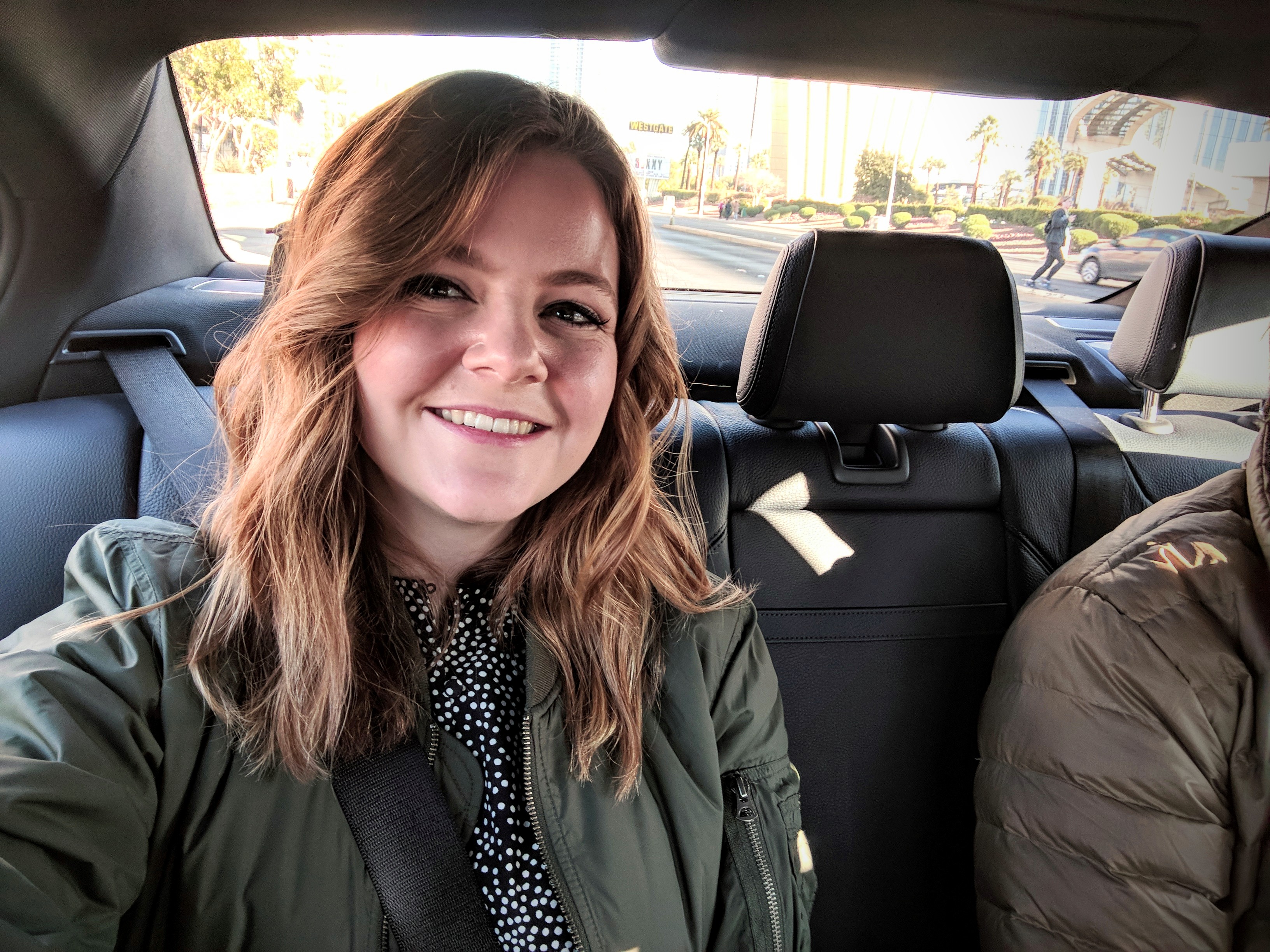LAS VEGAS – When I had the chance to hail a self-driving Lyft at the 2018 Consumer Electronics Show, I jumped at the opportunity.
A car that drives on its own and will ferry me around the Las Vegas strip? “Sure,” I thought.
It sounded a little scary but totally futuristic. Plus, I’d never ridden in a self-driving car before.
So on Wednesday morning, my colleague Kif Leswing and I showed up at a parking lot near the Las Vegas Convention Center to hail a self-driving Lyft ride. Lyft partnered with autonomous vehicle startup Aptiv for the event – Aptiv provided the car and the self-driving technology, while Lyft handled the ride-hailing part.
We had a nice ride around Las Vegas, but it turned out to be one of the least thrilling things I’ve done at CES so far – but that’s a good thing.
Autonomous car company Aptiv is one of seven companies Lyft partners with.

Jody Kelman, Lyft's product lead for its self driving platform, described their method as "plug and play": Companies like Aptiv, Waymo, and Jaguar Land Rover provide the cars, but they use Lyft's open platform for things like autonomous ride-sharing.
The coolest thing about the cars is how subtly Aptiv added the sensors, called LIDAR.
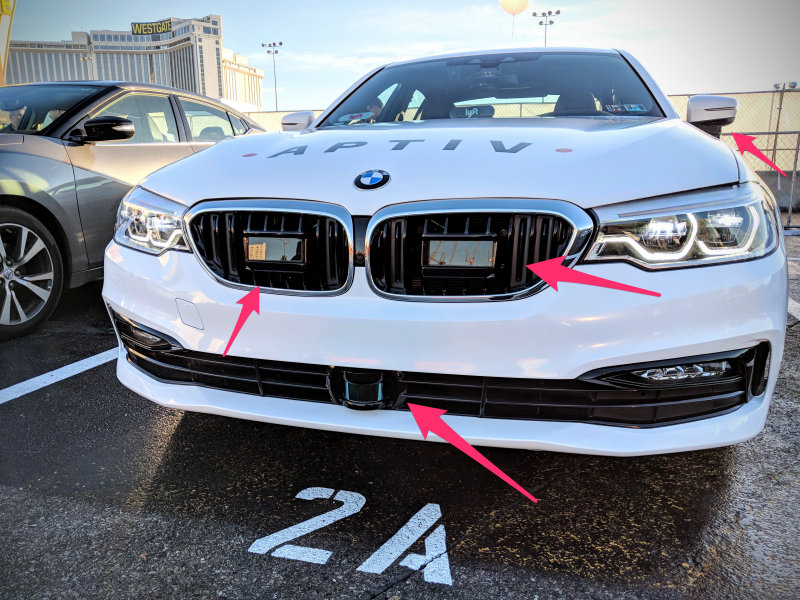
They're built right into the car rather than sitting on the roof like a lot of other companies. Those arrows point to a few, but they were others all over the body of the car.
It's actually so hard to tell it's a self-driving car that it had to be stamped across the back bumper.

We opened up the Lyft app to request a ride...
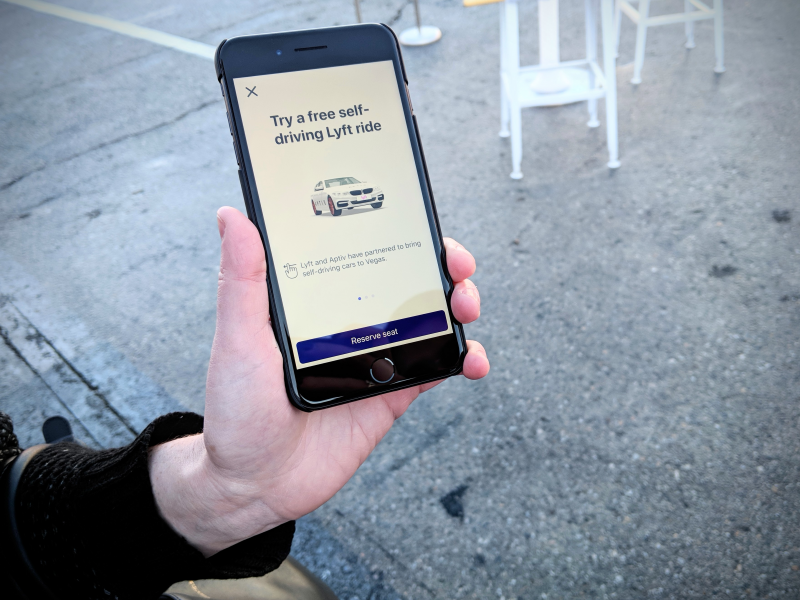
...and in a matter of seconds, our ride was ready for us.
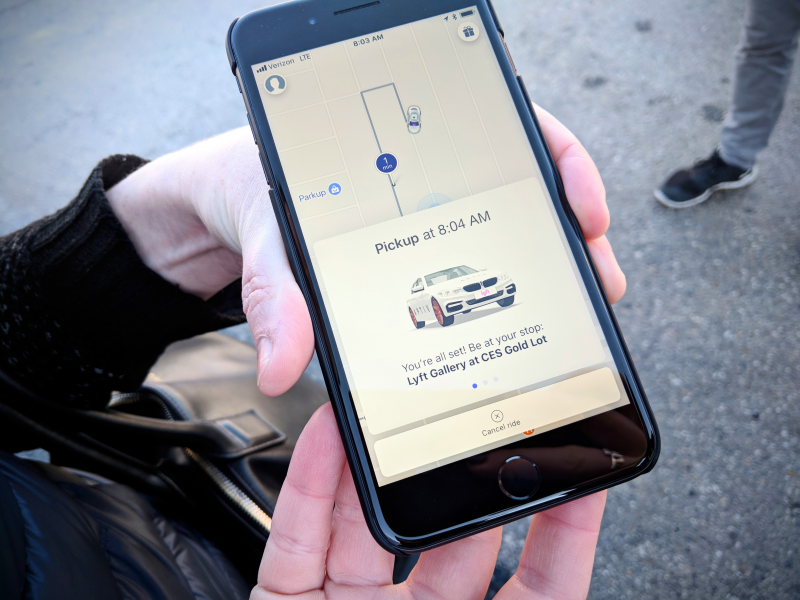
Here's me in front of our ride. Aptiv uses BMW 5-Series sedans, which makes for a nice ride. And check out those red rims!
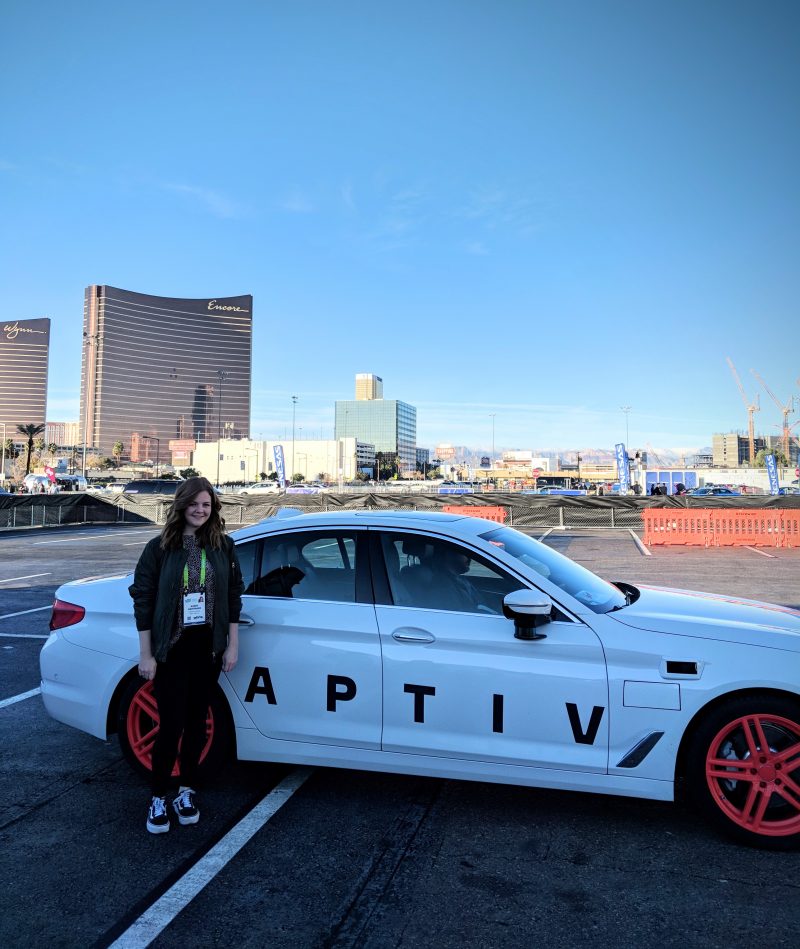
When we got in the car, this screen was wedged between the two front seats. To get going, we had to press the pink button that said "Start ride."

Each car has a pilot and a copilot. Our pilot wasn't allowed to talk to us because he needed to stay hyper-focused on the road, but Kelman served as our copilot and explained the process.

Since we started out on private property, we had to drive in manual mode.

But once on public roads, the system announced it was switching over to autonomous mode. Look, no hands!

Here we are driving along the Las Vegas strip:
We could watch our progress on the screen and check whether the car was in manual or autonomous mode. I only saw the pilot take over control once throughout the trip, and only because it was at a tricky turn near some construction.

The roads were pretty clear when we started out, and the car cruised along. I noticed that the system was a little more conservative than a human driver might be, since it typically stopped at yellow lights.

Once, while sitting at a light, the car detected a person in the crosswalk and didn't move even though the light turned green. And it's especially lucky it didn't, since the person was a police officer.

Eventually we hit traffic. The car inched along like a human driver would, but did one thing few human drivers would ever do: It let two cars merge in front of it.

All in all, the ride was pretty unremarkable. Kelman told us someone even fell asleep in the back of the car on a ride the day before.

Technology works best when it fits seamlessly into your life, and that's how the self-driving car felt. After the initial moment when it switched into autonomous mode, the ride felt like every other Lyft ride I've ever taken.
By the time we drove to Caesar's Palace and back, I was 100% comfortable in the car. In fact, the most exciting moment was at the end, when the car completed a perfectly executed U-turn on a busy street and the wheel turned all on its own.
Otherwise, the ride was almost boring. But compared to the alternative, boring is actually pretty great.

